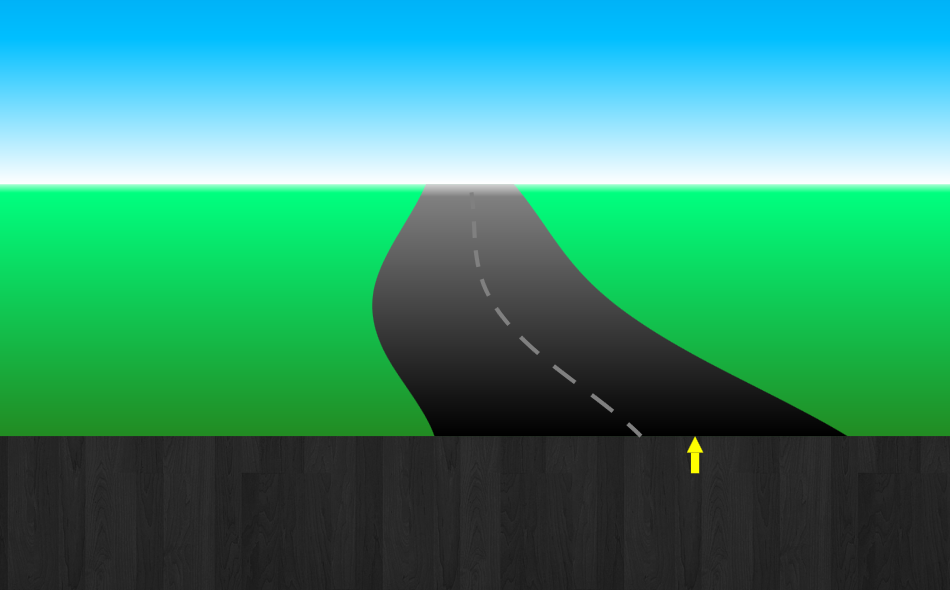Road Tracking

The road tracking task requires subject to follow a windy road with an analogue input device such as a mouse or joystick. The difficulty of the road can be adjusted by setting amplitude and frequency filter for the random road track and the size of the window which provides the preview on the upcoming track.
Performance in the the road tracking task is primarily measured by the SDLP index (standard deviation of lateral position) which is also used as an indicator of discovering fatigue during actual driving. By defining easy vs. windy road conditions the attentional demands can be varied. To be even more realistic, the road tracking task can be overlaid with disturbances such as random turbulence or inclined road conditions to force subjects to constantly re-adjust their cursor position.
The tracking task can be configured as pursuit tracking in which the cursor reflect the input device and the subject must make same movements as the road, or alternatively as a compensatory tracking task in which the subject must compensate the road track to keep the cursor on the target area. Multiple segments for one run can be defined to design tracks with changing conditions. Performance indices are recorded for each segment and in total. To analyze tracking data in detail offline, you can also download raw data per tracking cycle (~33msec).
Despite high face validity the pursuit tracking task only partially predicts actual driving behavior as the latter depends on many other factors as well. Tracking tasks are typically applied as part of psychometric test batteries which test other cognitive function in addition and in dual-tasks parallel to tracking. Typical areas of application are testing the capability of pilots and astronauts, studying driver drug-related impairments, and measuring truck driver fatigue and worker fitness-for-duty.
Publications
Rohde M, Van dam LC, Ernst MO. Predictability is necessary for closed-loop visual feedback delay adaptation. J Vis. 2014;14(3):4
Wasicko, R. J., MeRuer, D. T., & Magdaleno R. E. (1966). Human pilot dynamic response in single-loop systems with compensatory and pursuit displays, Technical report affdl-tr-66-137, Air Force Flight Dynamics Laboratory Research and Technology Division Air Force Systems Command Wright-Patterson Air Force Base, ohio
Verster JC, Roth T. Predicting psychopharmacological drug effects on actual driving performance (SDLP) from psychometric tests measuring driving-related skills. Psychopharmacology (Berl). 2012;220(2):293-301.
Links
Configuration Options
| Road Conditions | : | Width in mm, Slope, Filter and Amplitude of Random Turbolences |
| Track Type | : | Regular sine wave | random track |
| Track Difficulty | : | Max Filter in Hz, Max Amplitude in mm |
| Task | : | Stay on left lane | right lane | center |
| Block Structure | : | Any combination of block and sections within blocks |
| Timing | : | Duration of block and section in ms |
| Recording | : | Raw data | Summary statistics |
